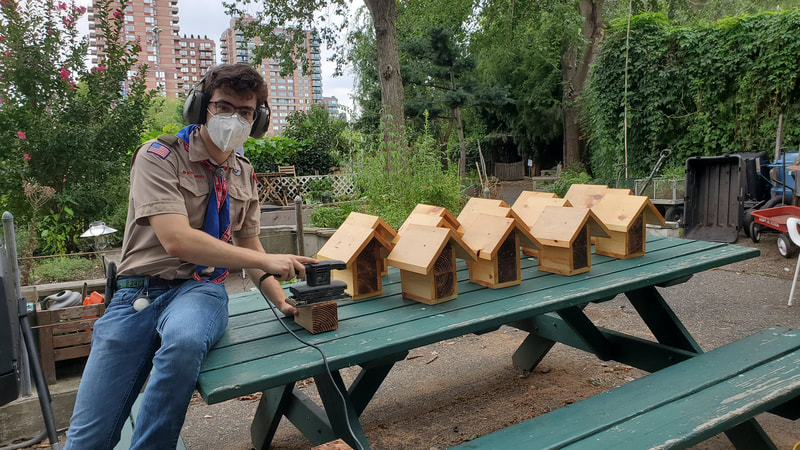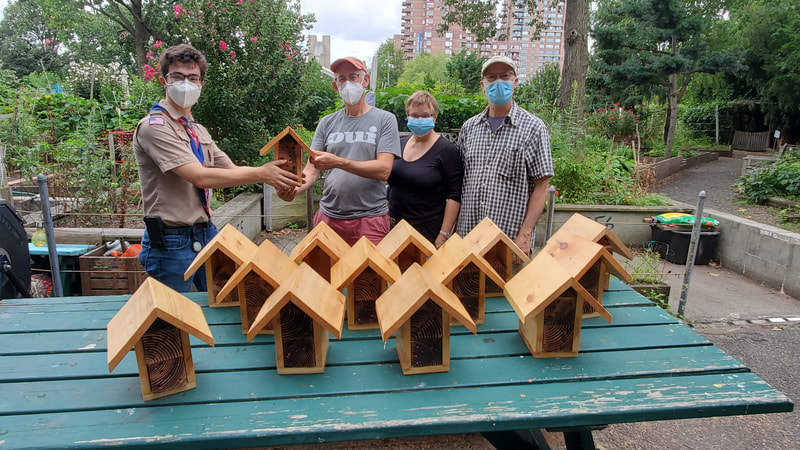Brendan’s thought process evolved as he researched the idea of supporting pollinators in the garden. He learned that, as much fun as the idea to get a livestock permit to raise honeybees might appear, the wiser ecological choice and the more urgent need was to support endangered native bees and provide homes for them. After designing the bee boxes, Brendan reviewed the plans with gardeners possessing woodworking expertise. Once Brendan had constructed the prototype, he demonstrated to Jack and to me that he had been resourceful in doing extensive online research and in learning about woodworking. Among other things, Brendan reached out to the Xerxes Society for Invertebrate Conservation for advice on the technical aspects of what homes would best suit the native bees. In so doing, he learned important details, including that the bee homes must face east or southeast, as the creatures are dependent upon the sun to warm them.
The project proved to have many steps: research, fundraising, shopping for untreated wood, purchasing wood, cutting wood, determining the best way to construct the boxes, assembling the boxes, drilling the holes, and installing the boxes. Challenges, especially in this era of COVID-19, were ever-present but Brendan grew and persisted. He rose to each occasion and then reflected on his learning. It is my understanding that one key aspect of the Scouts BSA Eagle Project is the need to lead others in service. During the course of Brendan’s project some 40 people were led in service to the environment.
The finished product is sturdy, attractive, and most importantly, should meet the needs of the native bees. One of the boxes is installed on the RIGC fence facing the East River, and we look forward to educating the public about the bee boxes, and the need to continue to support native pollinators. According to the Xerces society, "30% of native bees are cavity nesting such as leaf cutter and mason bees. These species need cavities in dead wood, hollow stems, or brush piles." These nesting shelters are designed with these bees in mind and should be posted on a steady spot facing east or southeast. For detailed instructions please download this pdf from Xerces.
I hope you will agree with us that Brendan Hynes has earned the rank of Eagle Scout. We at RIGC certainly do support his promotion.




 RSS Feed
RSS Feed
